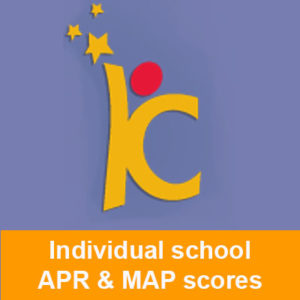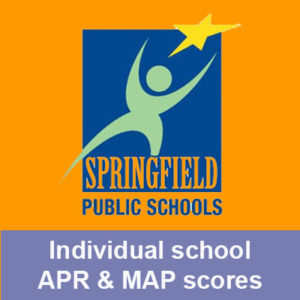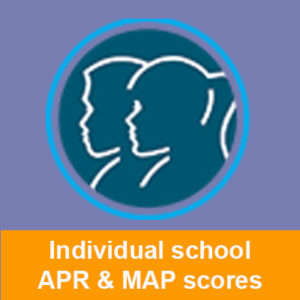Do you know how well your school is serving your child?
If you are a parent in Missouri, chances are that you are sending your child to a fully accredited school district.
In fact, out of 518 school districts in Missouri, only one (Normandy) is unaccredited and only five (Calhoun R-VIII, Hayti R-II, Hickman Mills C-, Kansas City 33, and Riverview Gardens) are provisionally accredited.
Sounds pretty good right?
Unfortunately, the state’s method of determining accreditation, called the Annual Performance Report (APR), is a complicated formula that ends up hiding true student performance.
The APR formula also takes into account criteria like attendance and graduation rates which further dilutes its purpose of measuring student proficiency.
That means that accredited school districts don’t always, or even reliably, produce students who are proficient in key subjects like English Language Arts (ELA) and math.
This interactive map provides detailed information – beyond APR scores – on every school district in Missouri. Simply click on your district to see the graduation rates, MAP scores, and ACT scores for your district.
District scores hide individual school performance
To make matters worse, the state grants accreditation on a district-wide basis, meaning that districts with super high performing schools like magnet schools end up with misleading APR scores which can hide the true performance of students at lower performing schools.
That means that even if your district is fully accredited, your child may be attending a lower performing school with abysmal proficiency rates.
So what does this look like in some of Missouri’s larger metropolitan areas?
Kansas City

Click the logo above to get individual ARP and MAP scores for every school in the Kansas City 33 School District.
The Kansas City 33 School District, which serves 14,581 students in 35 schools had a 2016 APR of 70, which is the dividing point between partial and full accreditation.
Kansas City 33 scored full points for attendance and but only 80 percent for graduation and 57.1 percent for academic achievement.
Districtwide scores on the Missouri Assessment Program (MAP) test showed that only 35.2 percent of students were proficient in ELA and 23.8 percent were proficient in math. As in St. Louis, 37.7 percent of students in Kansas City 33 scored below basic in ELA but slightly more, 31.9 percent, scored below basic in math.
In the district’s lowest performing schools, Troost Elementary School had 11.9 percent of its students scoring proficient in ELA and Faxon Elementary School had only 4.8 percent of students scoring proficient in math.
St. Louis City

Click the logo above to get individual ARP and MAP scores for every school in the St. Louis City School District.
The St. Louis City School District, which served 22,506 students in 73 schools, had a 2016 APR of 74.6 percent which well below some of the top performing districts in the state, but still enough to give it a fully accredited status.
When you dial down into the details, however, the district scored full points for attendance and graduation, but only 57.1 percent for academic achievement.
Districtwide scores on the MAP test showed that only 36.8 percent of students were proficient in ELA and 25.9 percent were proficient in math. A whopping 37.7 percent of students scored below basic in ELA and 39.6 percent scored below basic in math.
When you dial down to the school level the results get even worse. For example, at Clay Elementary School only 12.5 percent of students scored proficient in ELA and 0 percent of students scored proficient in math.
Springfield

Click the logo above to get individual ARP and MAP scores for every school in the Springfield R-XII School District.
The Springfield R-XII School District, which serves 24,883 students in 52 schools had a 2016 APR of 86.8 percent, down from 90.4 percent in 2015.
Springfield R-XII scored full points for graduation and but only 75 percent for attendance and 83.9 percent for academic achievement.
Districtwide scores on the MAP test showed that 60.6 percent of students were proficient in ELA and 42.7 percent were proficient in math, both close to the state averages, but far from what parents would hope for.
In Springfield R-XII, 17.7 percent of students scored below basic in ELA and 23.7 percent scored below basic in math.
In the district’s lowest performing schools, Westport Elementary School had 30.4 percent of its students scoring proficient in ELA and Campbell Elementary School had only 10.7 percent of students scoring proficient in math.
Columbia

Click the logo above to get individual ARP and MAP scores for every school in the Columbia 93 School District.
The Columbia 93 School District, which serves 17,213 students in 33 schools had a 2016 APR of 86.8 percent, down from 84.3 percent in 2015.
Columbia 93 scored full points for graduation and but only 75 percent for attendance and an impressive 91.1 percent for academic achievement.
Districtwide scores on the MAP test showed that 60.6 percent of students were proficient in ELA and 49 percent were proficient in math.
But even with scores close to the state average and a 91.1 percent score on academic achievement, the district had 21.2 percent of students scoring below basic in ELA and 23.8 percent scoring below basic in math.
In the district’s lowest performing schools, Blue Ridge Elementary School had 34.1 percent of its students scoring proficient in ELA and Campbell Elementary School had only 20.1 percent of students scoring proficient in math.
« Previous Post: Charter school teacher named St. Louis Regional Teacher of the Year
» Next Post: CEAM helps parents fight for better education